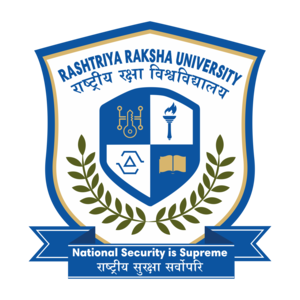
The Tale of Two Names
THE TALE OF TWO NAMES
-Istela Jameel
Introduction
In midst of the raging pandemic, when the Supreme Court is hearing only the most urgent pleas, a petition to rename the country was heard on the 2nd of June. This urgent petition was to amend the Constitution and replace the term India with Bharat. It was argued that denouncement of the colonial name would instil a feeling of nationalism amongst the citizens. Although, Supreme Court dismissed the petition by stating that the name Bharat was already recognised in the Constitution it merely stonewalled the issue of renaming. The verdict of the Supreme Court stated that it cannot amend the Constitution hence the petition should instead be presented before the Government in the form of a representation. Thus, although it was settled that both names, India and Bharat are valid and functional, the age old conflict between the two was not resolved. This is because, although both terms depict the same nation, they differ in their connotation due to the differing historical background, nature, language and evolution. While politics of nomenclature is no recent development, the aggressive renaming public spaces have raised questions regarding the agenda behind the same. In this blog an attempt is made to delve into the root of this conflict. For this purpose, the etymology of the two words is scrutinized and differences between the two extrapolated. For this, historic facts, scholarly works and the Constituent Assembly debates shall be employed. The multiple layers of the conflict between India and Bharat will be unravelled and the implications of the resurgence of this debate in the current paradigm will be highlighted.
Etymology of the Names
India is a country of many names. Different eras, civilisations and empires referred to this South Asian subcontinent differently. From ‘Meluha’ during the Indus Valley Civilisation to ‘Aryavarta’ and ‘Jamundvipa’ in the Vedic period, each name had its own geographical, socio-political and cultural significance which starkly differed from the other. The three most popular names of the country which remains a part of common usage are India, Bharat and Hindustan.
The etymology of the name Bharat can be traced back to the Puranic literature and Hindu epics such as the ‘Mahabharata’. According to these sources, Bharat was the name of the Emperor who ruled over the subcontinent and named it ‘Bharatvarsha’. However, the India that we know of today, is not the same as the ‘Bharat’ referred to in the Puranas. The shape of the ‘Bharat’, mentioned in the epics and Puranas, is ambiguously defined as the land between the seas in the south and mountains in the North. This does not sufficiently identify our present day nation. The defined territory that we know as India today was framed in the late 19th century when the socio-political and territorial extent of the British Empire was mapped. After the conception of British India, ‘Bharat’ was associated with social, moral and traditional concepts native to the people of India while, ‘India’ was used to refer to the political, administrative and territorial order and extent of the British colony. Hence, a distinction was drawn between tangible and abstract aspects of same the nation.
‘India’, however, was not the first socio-political name used for our nation. ‘Hindustan’ denoted the socio-political and geographical expanse of the Mughal Empire. Hindustan was a Persian name derived from the accented pronunciation of the Sanksrit word for Indus River, ‘Sind’. Hence, Hindustan literally translates to the land beyond the Indus River. The same basis of naming the subcontinent was used by the Greek. Herodotus in 440 B.C.E. used the term ‘India’ to refer to the subcontinent and since then many derivations of the name such as Indica, Indou, Hind originated. The Greek moniker was subsequently used to identify the British Empire of India.
Constituent Assembly Debate
When the Constituent Assembly debated over the nomenclature of the nation, passionate arguments were presented in favour of Bharat. Kamala Pati Tripathi, Seth Govinddas, Shri Ram Sahai, Hargobind Pant and Hari Vishnu Kamath were the primary advocates for the name Bharat. Their reasoning was that Bharat, the ancient name of India, enshrines its soul that was lost to a thousand years of slavery and insubordination. In order to regain our lost pride and consciousness, India, the name coined by the colonial master which serves as a constant reminder of our enslaved past, should be rejected and the ancient name be restored. However in light of the herculean task of uniting a fragmented nation recovering from the deep gashes of partition, this proposal was rejected. The reason behind the same was that Bharat was thought to have a Hindu overtone. Due to its sources and usage, it lacked a secular tenor and the religious undercurrent could lead to communal divide in the future. To prevent the same while preserving the spirit of nationalism, it was incorporated as an alternate name. This gave Bharat its due recognition while maintaining the secular spirit of the Constitution.
Conflict in Current Times
In the recent years, the politics of nomenclature has been revived with increased fervour. Before the 2019 elections several cities and public spaces were renamed with disregard for the legal procedure. This vote bank politics was driven by the erasure of the Mughal heritage which was perceived as history of Muslim domination. The Allahabad became Prayagraj and Faizabad’s became a part of Ayodhya, Mughalsarai railway station was renamed Deen Dayal Upadhay and Aurangzeb Road lost its emperor to become APJ Abdul Kalam Road. The Central and State Governments are accused of saffronising India under the garb of nationalism. In this communally charged and polarised society, the concern arises whether the petition to rename India to Bharat was born out of genuine resentment of the colonial past or is it another attempt at saffronising India. The name Bharat, much like Hindustan, is secular in itself. However, just like Hindustan was interpreted to mean the land of Hindus, Bharat too has been communalised. In the eyes of the Hindu nationalists there is a stark philosophical distinction between the country of India and Bharat. Although, an attempt was made by VS Sundaram, who strongly advocated in favour of Bharat, to clarify the misconception behind Bharat being a Hindu terminology , the same did not deter appropriation by the Hindu Nationalists. The RSS Chief in an address to fellow ideologues affirmed that “Bharat is Hindu Rashtra and all Bhartiya are Hindus”. Hence, in light of this progressively growing Hindutva ideology and intensive renaming of places with an English or Mughal name, apprehensions arise whether renaming the country be antithetic to inclusivity, secularism and harmony of India integral to the spirit of our democracy.
Conclusion
“Nationalism is both a vital medicine and a dangerous drug”~ Geoffrey Blainey
Our country is currently experiencing a peculiar brand of nationalism. This form of nationalism is rooted in exclusivity and otherisation. The recent trend of saffronisation and rising communalism shows that this brand of nationalism is not love for the nation of all, but rather love for an idealistic nation wanted by a few. Nationalism is being wielded as a tool for redefining Indian heritage and shrouding administrative shortcomings. The petition to rename the country, when the entire society has been paralysed by a pandemic, highlights the disproportionate importance being given to instilling the spirit of nationalism. This blog has tried to consolidate the conflict between India and Bharat. The etymological difference, constituent assembly debate and recent trends of rising nationalism show that the dispute is more than just about a colonial name superseding the native name. There are complex dimensions to this which need to be addressed with due regard for constitutional principles and ideals of our nation.












